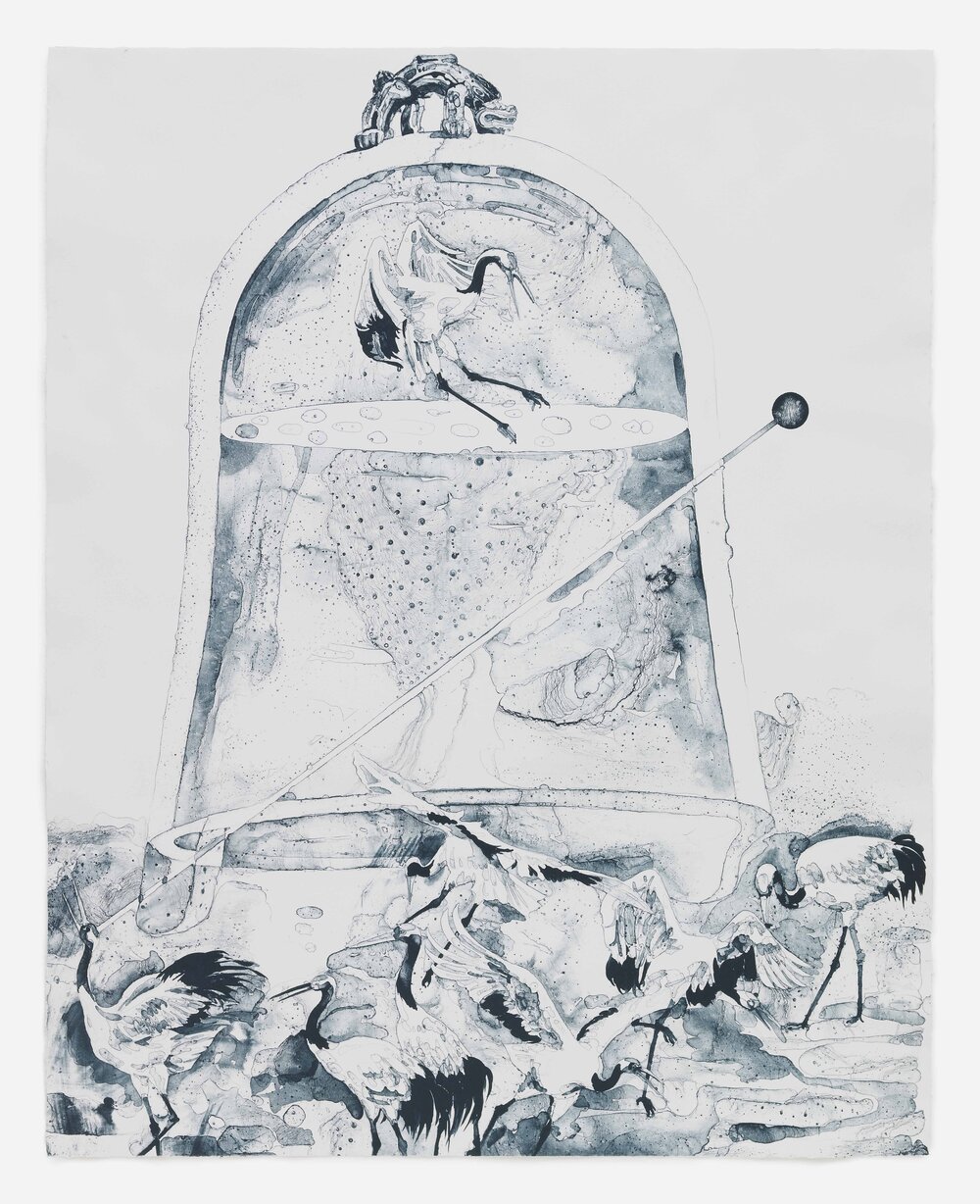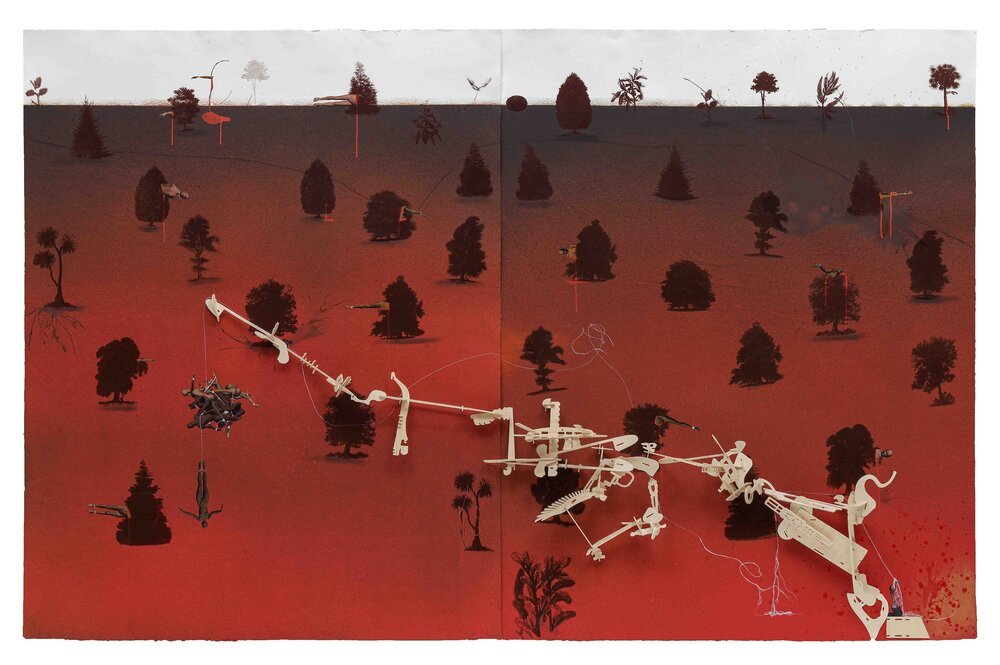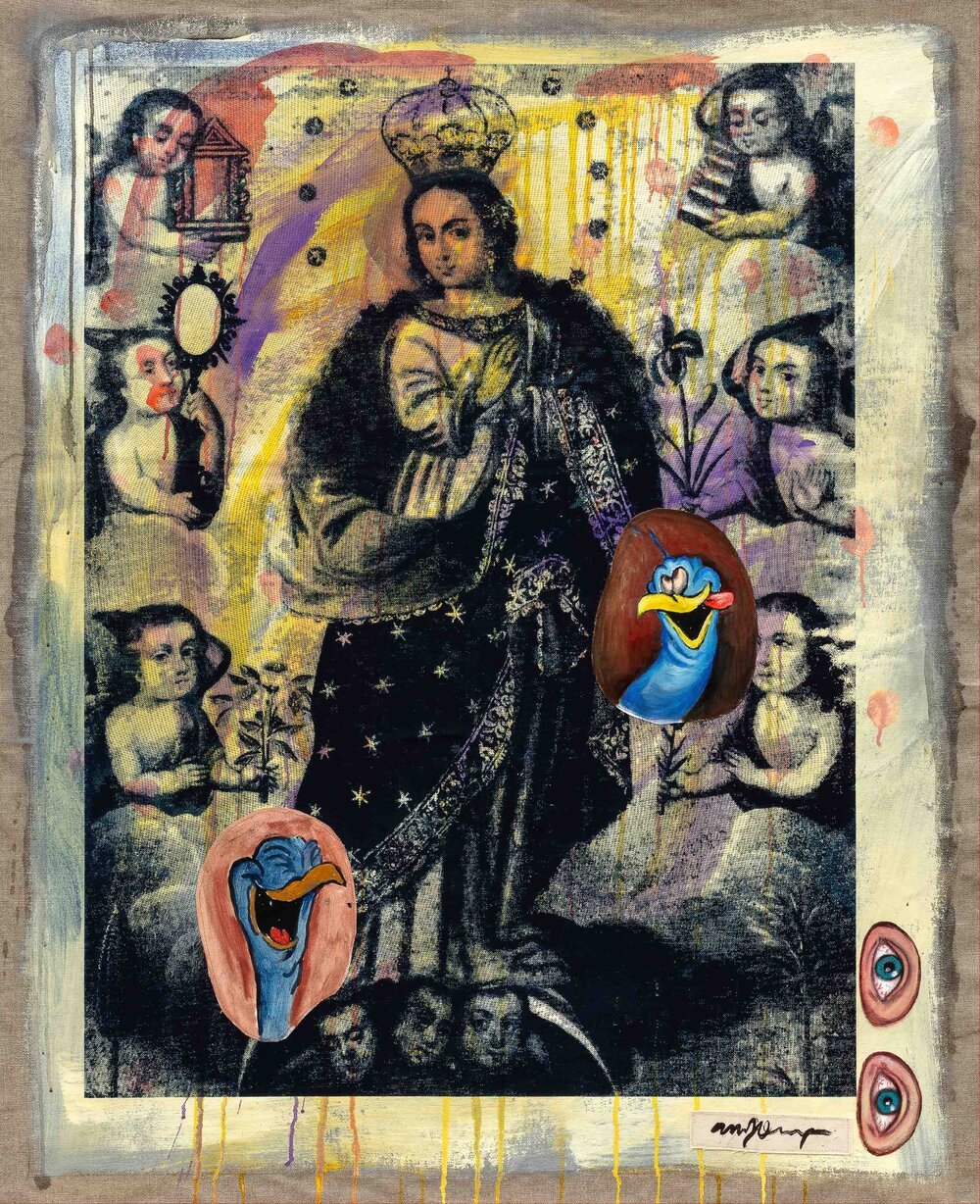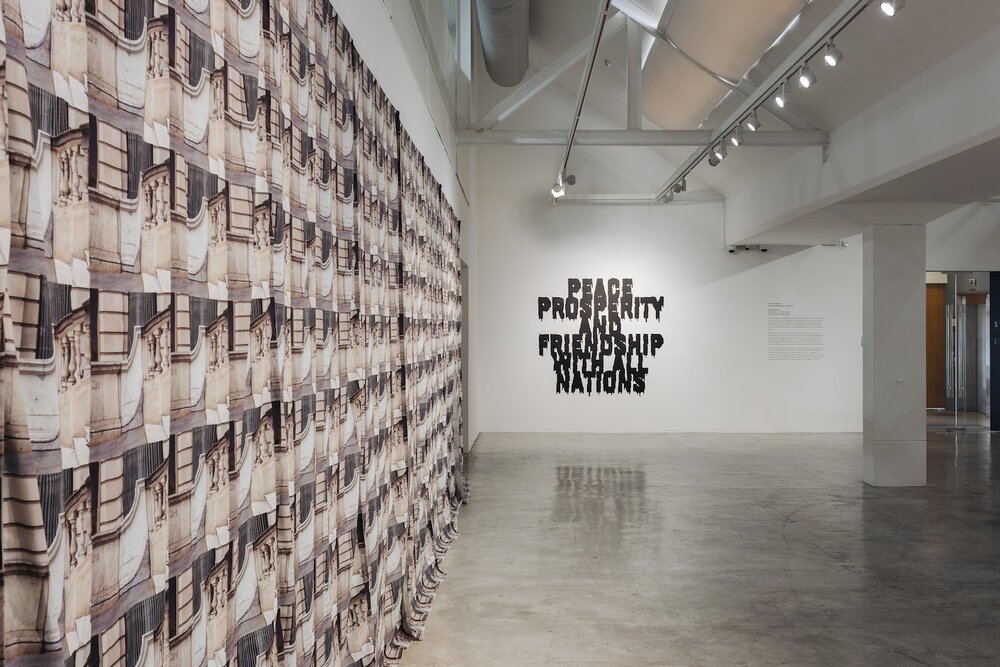Review of 'Turning the Axis of the World' at STPI
Curator Tan Siuli on creative agency in uncertain times
By Ian Tee
'Turning the Axis of the World', 2020, exhibition installation view. Image courtesy of STPI — Creative Workshop & Gallery, Singapore
In his book 'The Postconceptual Condition', the theorist Peter Osborne wrote: "the contemporary, far from identifying with a 'present' reduced to a narrow and fugitive slice of chronological time, actually consists in the knitting together of a specific variety of times". His statement speaks about how contemporary works of art are continually revisited and augmented through the lens of multiple histories. Thus, this "knitting together" exposes interpretations and connections to pasts we value as relevant or timely.
STPI's latest exhibition 'Turning the Axis of the World' takes the axis mundi as a curatorial device to reflect on critical issues of our time, from the overturning of the symbolic order to human's tenuous relationship with the natural world. Featuring works of 15 past residency artists created in collaboration with STPI Creative Workshop, the show is the gallery’s first exhibition since Singapore eased its circuit breaker restrictions and an invitation to "consider our responses and agency in these uncertain times".
Curator Tan Siuli. Photo by Toni Cuhadi, image courtesy of STPI – Creative Workshop & Gallery, Singapore.
‘Turning the Axis of the World’ is also guest curator Tan Siuli’s first project since leaving her position as Head of Collections at the Singapore Art Museum after 12 years. In her effort to "offer new insight into familiar works", Tan employs a strong element of storytelling to frame the exhibition. It is divided into three sections, each banded under a quote from a past resident artist. These "turns" are also signposted by Rikrit Tiravanija's silver portals, from his 2014 solo presentation 'Time Travelers Chronicle (Doubt): 2014-802,701 A.D'. Recontextualised in this group exhibition, they serve as metaphorical gates into new ways of thinking. The works hold the exhibition's narrative thread through subtle nods in the symbolism of each object in front of the portal. For example, the sextant, an outdated navigation tool, appears in the section discussing new ways of traversing a disordered world.
Dinh Q. Lê, 'Empires', 2017. Produced at STPI – Creative Workshop & Gallery, Singapore. Artwork © Dinh Q. Lê/STPI. Photo courtesy of STPI.
Qiu Zhijie, 'Winter Solstice', 2008. Produced at STPI – Creative Workshop & Gallery, Singapore. Artwork © Qiu Zhijie/STPI. Photo courtesy of STPI.
Charged and playful moments abound in 'Turning the Axis of the World', with works displaying a wide range of materials, techniques and sensibilities. While Tan hopes the show would address the current climate with different tenors, I find the selection of works directly dealing with socio-political themes most compelling. The opening section gathers artistic interventions to symbols of culture and power. Its centrepiece is Dinh. Q. Lê's 'Empires' (2017) which juxtaposes the grandeur of Angkor Wat and obscure memorial shrines to the victims of the Khmer Rouge's killing fields. In dialogue with Lê's panoramic wall relief, Chinese artist Qiu Zhijie's lithograph prints are based on stories about another important national landmark, the Nanjing Yangtze River Bridge. The bridge is a symbol of the achievements from the Mao Zedong era, and a well-known suicide spot, thus carrying both utopic aspirations and the effects of its overbearing strain on individuals who fall behind.
The bell form anchoring Qiu’s compositions are echoed in Pinaree Sanpitak's floating vessels. Her iconic 'Breast Stupa' blends the sacred and the feminine, embodying a shifting symbol that challenges binary understandings of the world. In the curatorial text, Tan reflects on these pieces in light of "recent redressing of histories of violence invested in various statues and monuments around the world, and urges us to think about how and why we remember." This group of works brilliantly captures how artists tap into the power of iconography and layer them new meanings.
Hema Upadhyay, 'UNIVERSE REVOLVES ON (XVI)', 2008. Produced at STPI – Creative Workshop & Gallery, Singapore. Artwork © Hema Upadhyay/STPI. Photo courtesy of STPI.
Shirazeh Houshiary, 'The River is Within Us 1/A, 2/A, 4/A, 7/A', 2015, exhibition installation view. Produced at STPI – Creative Workshop & Gallery, Singapore. Artwork © Shirazeh Houshiary/STPI. Photo courtesy of STPI.
Seizing the opportunity to pause and reflect, as many have done in the pandemic, it is a treat to revisit old works or view them in a new setting. 'UNIVERSE REVOLVES ON (XVI)' (2008) by the late Hema Upadhyay is a standout piece from STPI's early years, exhibited for the first time since the artist's untimely death in 2015. Depicting a scorched earth landscape with haunting figures, the work is a visceral encounter that speaks to human's fraught relationship with ecology.
Another highlight is Shirazeh Houshiary's series of lightboxes 'The River is Within Us' (2015), presented in a darkened chapel-like space. This dedicated setting brings out the ethereal quality of Houshiary's repetitive marks that seem to pulsate to the rhythm of one's breath. All that is missing is a bench for audiences to comfortably immerse themselves in the experience.
Manuel Ocampo, 'Learning to Code pt. 6', 2019. Produced at STPI – Creative Workshop & Gallery, Singapore. Artwork © Manuel Ocampo/STPI. Photo courtesy of STPI.
Heri Dono, 'Ronggowarsito Perspective', 2015 (detail). Produced at STPI – Creative Workshop & Gallery, Singapore. Artwork © Heri Dono/STPI. Photo courtesy of STPI.
Having established the ongoing discord in various parts locales, 'Turning the Axis of the World' closes with a section provocatively titled after Manuel Ocampo's quote: "(Artistic) Laws Demand Their Own Destruction". Drawing on works that express a state of fluidity, the section plays with the idea of realities in flux and making sense of a disordered world.
What was put forward as an optimistic closing section could have benefited from clearer focus in its argument for creative agency in our uncertain times. Heri Dono's 'Ronggowarsito Perspective' (2015) shows a stream of consciousness breaking free from the confines of the vitrine, representing a call to rise above the entrapment of false realities. This message is trivialised when displayed next to Teppei Kaneuji's acrylic boxes with silk-screened household objects. The shift in tenor is jarring, with the effect of making the selection of works more didactic and beholden to the curatorial narrative. Dono expresses a desire to transcend our "age of madness" while Ocampo approaches our chaotic times with irony and perversion. However, these perspectives become subsumed when the pieces are viewed in isolation from the artists’ larger bodies of work.
Recalling Osborne's statement at the beginning of this review, one can conceive the exhibition as a "knitting together of a specific variety of times" from STPI's archive and collaborators. While the element of “time travel'' is playfully suggested vis-à-vis Tiravanija's portals, what are its implications for STPI's exhibition history and the respective artists' practices? 'Turning the Axis of the World' is at its best when the works speak profoundly to the present moment, while retaining strong characteristics from their initial solo presentations. It is a reminder of the “third hand” emerging from a collaboration between strong individual practices and the workshop’s collective expertise.
'Turning the Axis of the World' is on view from 15 August to 13 September 2020, at STPI Gallery.


















